tutorial, commentary, study resources, plot, and web links
Sanctuary was first published in 1903, and is thus only Edith Wharton’s third published fictional work, after the two earlier novellas The Touchstone and The Valley of Decision.
Sanctuary – critical comment
Structure
The structure of the tale is relatively simple – and is closely connected with what seems to be its principal meanings. The narrative is divided into two parts which are connected by the presence in both of Kate Orme-Peyton. In the first part Kate is presented with a moral dilemma. Her fiancé Denis inherits money from his step-brother Arthur by morally underhand means.
Arthur’s wife and child have been disinherited. Denis has known about the existence of Arthur’s wife all along, and yet he has not revealed the fact at the court proceedings. He is prepared to accept the tainted inheritance, even though he is indirectly responsible for the deaths of Arthur’s wife and child – because the wife has taken their lives in despair.
Denis has looked after his step-brother Arthur (just as Dick will look after Paul) – but he has betrayed him nevertheless, by withholding knowledge of the marriage during the court proceedings. He has also tried to buy off the wife and salve his own conscience by offering her money – which she refuses.
Kate is appalled by this behaviour and what she sees as a lack of moral fibre. She suggests to Denis that he has a duty to own up to the truth publicly and that he should forfeit the money. When he refuses to do so, she ceases to love him and puts the marriage on hold.
But she then conceives of her grand sacrificial scheme. She realizes that Denis is likely to marry somebody else and have a child ‘born to an inheritance of secret weakness, a vice of the moral fibre, as it might be born with some hidden physical taint’. Rather than that, she decides to marry Denis and bring up his child under her own protection.
In the second part of the tale she has therefore raised her son Dick in this self-sacrificing manner, and her husband Denis has proved himself a moral wastrel after all by squandering his inheritance. But she now fears a repetition of the same events, which are directly paralleled in the case of Dick and his close friend Paul Darrow. The friend dies, leaving Dick an inheritance of the architectural designs which could win the competition. These designs have even been passed over to Dick quite willingly, and there is a temptress in the sidelines (Clemence Verney) urging him to profit from this morally dubious act.
His mother is anxious that he will succumb to the temptation, but does nothing to directly interfere. In the end we are asked to believe that his mother’s moral influence prevails – though it is stretching credibility when Dick renounces the prospect of marriage to Clemence only twenty-four hours after becoming engaged to her – and at that point the tale takes on a distinct suggestion of nineteenth century melodrama, with a last-minute resolution to the drama.
A Freudian interpretation
Edith Wharton was over forty when she wrote Sanctuary. She had no children of her own, and her marriage to her husband Teddy was less than satisfactory – but it is difficult to find anything in her private life that would explain or throw light on the extraordinary illustration of the Electra complex which this tale reveals.
Kate Orme is radiantly happy with her fiancé at the start of this tale, but then discovering that he is morally flawed, she rapidly falls out of love with him. Nevertheless, she decides to marry him so that he will not marry and father a child with someone else (from whom he is likely to conceal his moral turpitude). Kate reasons to herself that by taking on his ‘sin’ she can prevent it from being passed on unknown to another generation.
In other words, she embarks upon a path of controlling biologically and psychologically the next generation. We do not have an account of the intervening years, but when Dick Peyton emerges as a young architect on Fifth Avenue, presumably twenty-odd years later, the bond between him and his mother is pitched at a very serious emotional level. She has travelled to France and lived with him during his post-graduate studies at the Beaux-Arts. She wishes to control his actions; she disapproves of his fiancée Clemence and they dispute quite openly over the ability to influence him.
Eventually, Dick reverses his actions and allegiances, and allies himself with his mother – knowing that he is sacrificing his success as an architect and his prospective marriage to Clemence. He is resisting the compromising lure of easy success – for morally good (though scarcely credible) reasons – but the decision ties him even more closely to the mother who has had his destiny in mind before he was even born.
We do not know what happens beyond the text, but by the end of the tale Kate Peyton emerges as a successfully controlling mother figure (with good motives) whose feckless husband is dead and who has a somewhat unhealthily close relationship with her son. It is reasonable to see this as an illustration of the Jocasta complex first proposed by Raymond de Saussure in 1920 – which may be described as ‘different degrees of attachment, including domineering but asexual mother love – something perhaps particularly prevalent with an intelligent son and an absent or weak father figure’.
Form
This is a difficult piece of work to place in terms of literary form. The narrative lacks the range and the social depth of even a short novel, and for that reason it is often categorised as a novella – the story of young woman who discovers ‘the moral sewage that surrounds her’ (Houghton Mifflin). But Kate has made this discovery half way through the tale, and spends its second part making what turns out to be a successful act of resistance to it. She does not learn anything new in the second part of the narrative: she merely hopes that her passive moral stance will prevail – which is does. This is not the shape or the structure of events shared by classic novellas.
It also does not have the densely concentrated complexity of a novella, apart from the similarity of the two ‘inheritances’. And given that the events are stretched over the time scale of two generations, it lacks the temporal unity and the compression of events required by the novella form. Yet it is more ‘shaped’ than simply a long story – and might therefore better be classified as a tale – a form sufficiently elastic to accept anything which is squashed into it. However, others might wish to argue that the structural parallels of the two temptations and the continuity of Kate’s presence constitute the case for it being considered a novella.
Sanctuary – study resources
![]() Edith Wharton Stories 1891-1910 – Norton Critical – Amazon UK
Edith Wharton Stories 1891-1910 – Norton Critical – Amazon UK
![]() Edith Wharton Stories 1891-1910 – Norton Critical – Amazon US
Edith Wharton Stories 1891-1910 – Norton Critical – Amazon US
![]() Sanctuary – eBook format at Project Gutenberg
Sanctuary – eBook format at Project Gutenberg
![]() A Historical Guide to Edith Wharton – Amazon UK
A Historical Guide to Edith Wharton – Amazon UK
![]() The Cambridge Introduction to Edith Wharton – Amazon UK
The Cambridge Introduction to Edith Wharton – Amazon UK
Sanctuary – plot synopsis
PART ONE
Part I. Arthur Peyton has died under dubious circumstances after a long illness, leaving his inheritance to his step-brother Denis, who has been engaged to Kate Orme for two months. Denis arrives to see Kate with the news that a woman claiming to be Arthur’s wife has killed herself and her child, having lost an inheritance claim in court against the family, who denied that Arthur was married.
Part II. Kate has lived a protected life and now feels that she is facing the grim realities of the world. But when she expresses her sympathetic understanding of the dead woman’s situation to Denis, he reveals that he knew all along that Arthur was married.
Part III. The woman previously nursed Arthur through his illness, married him, and bore him a child. A lawyer has pursued her claim for inheritance in court, but lost the case. Arthur made over his inheritance to Denis, but no witnesses to this agreement are traceable, and Denis could face jail for misleading the court. Kate feels that Denis is responsible for the deaths of two people and is bitterly disappointed in him.
Part IV. Denis’s mother visits Kate to pleads his case, based upon the supposition that he is honourable and innocent. Kate feels socially pressured, but feels that she must stand by a decision to postpone the marriage.
When her father returns home from business, he reveals to Kate a similar scandal in another remote part of their family. Kate reflects on the element of corruption lurking beneath the polite surface of life. She then persuades herself that she might expiate Denis’s sin by marrying him – so that he does not pass on his tainted inheritance to some other woman’s child.
PART TWO
Part I. A generation later Kate’s son Dick is in an architecture practice on Fifth Avenue. Denis has died long ago, after squandering the inheritance. Kate has devoted herself protectively to her son, who she fears might have inherited his father’s weakness of character. Dick has entered an architecture competition along with his industrious friend Paul Darrow. Dick also wishes to impress a female admirer, Clemence Verney.
Part II. Kate discusses ambition and architecture with Miss Verney at Dick’s office tea party. Then she discusses Miss Verney with the clever but gauche Paul Darrow, who has completed his own competition entry designs. Both of them suspect Miss Verney of being an ambitious social climber.
Part III. Dick has not completed his competition designs, and is running out of time. Darrow falls ill with pneumonia, and Dick hastens to look after him. Kate feels guilty that she has sacrificed everything for her son, when he now appears to shirking his responsibilities to his chosen profession. But then Darrow dies, and it transpires that he has generously left Dick his own competitions designs to use.
Part IV. Dick inherits all Darrow’s effects, and decides his own competition plans are not good enough to submit. His mother protests, and asks to see both sets of designs so that they can judge. But he does not comply with her request, and she fears that all her vigilant protection of him will come to nothing.
Part V. Next day Dick leaves for the office without discussing the matter. Kate fears that his weak character will lead him into the easy temptation of passing off Darrow’s designs as his own. She meets Miss Verney at a concert, where the young woman admits her interest in Dick and her ambition on his behalf. Kate reveals the issue of Darrow’s bequest, but Miss Verney argues that this fully justifies Dick’s appropriation of the designs as his own for the competition.
Part VI. Two days later Dick decides to dine out, but then his business partner Gill calls at the house looking for him. He phones to Miss Verney’s house, and the conversation reveals to Kate that Dick is using Darrow’s sketches to complete his own competition entry. When Dick arrives home, it is to announce his engagement to Clarence Verney.
Part VII. Kate feels that Miss Verney has triumphed over her in the struggle for Dick’s conscience.However, Miss Verney has stipulated that the engagement should not be made public until after the competition result has been announced.
Part VIII. On the eve of the competition judgements Kate goes to the opera, spots Miss Verney, and retreats in defeat. She calls at Dick’s offices on her way home. There he reveals that after a long struggle he has felt his mother’s silent influence prevailing, and has decided to give up the competition – and by implication his engagement to Miss Verney as well.
Video documentary
Principal characters
| Kate Orme | a young American woman |
| Denis Peyton | her fiancé |
| Mrs Peyton | Denis’s mother, the second Mrs Peyton |
| Arthur Peyton | Denis’s step-brother |
| Mr Orme | Kate’s father |
| Dick Peyton | Kate’s son, an architect |
| Mr Gill | Dick’s partner in business |
| Clemence Verney | a young American social climber |
| Paul Darrow | Dick’s friend, also an architect |
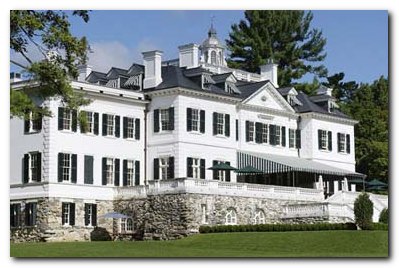
Edith Wharton’s 42-room house – The Mount
Further reading
Louis Auchincloss, Edith Wharton: A Woman of her Time, New York: Viking, 1971,
Elizabeth Ammons, Edith Wharton’s Argument with America, Georgia: University of Georgia Press, 1982, pp.222. ISBN: 0820305138
Janet Beer, Edith Wharton (Writers & Their Work), New York: Northcote House, 2001, pp.99, ISBN: 0746308981
Millicent Bell (ed), The Cambridge Companion to Edith Wharton, Cambridge: Cambridge University Press, 1995, pp.232, ISBN: 0521485134
Alfred Bendixen and Annette Zilversmit (eds), Edith Wharton: New Critical Essays, New York: Garland, 1992, pp.329, ISBN: 0824078489
Eleanor Dwight, Edith Wharton: An Extraordinary Life, New York: Harry N. Abrams, 1994, ISBN: 0810927950
Gloria C. Erlich, The Sexual Education of Edith Wharton, California: University of California Press, 1992, pp.223, ISBN: 0520075838
Susan Goodman, Edith Wharton’s Women: Friends and Rivals, UPNE, 1990, pp.220, ISBN: 0874515246
Irving Howe, (ed), Edith Wharton: A collection of Critical Essays, London: University of North Carolina Press, 1986,
Jennie A. Kassanoff, Edith Wharton and the Politics of Race, Cambridge: Cambridge University Press, 2004, pp.240, ISBN: 0521830893
Hermione Lee, Edith Wharton, London: Vintage, new edition 2008, pp.864, ISBN: 0099763516
R.W.B. Lewis, Edith Wharton: A Biography, New York: Harper and Rowe, 1975, pp.592, ISBN: 0880640200
James W. Tuttleton (ed), Edith Wharton: The Contemporary Reviews, Cambridge: Cambridge University Press, 1992, pp.586, ISBN: 0521383196
Candace Waid, Edith Wharton’s Letters from the Underworld, London: University of North Carolina Press, 1991,
Sarah Bird Wright, Edith Wharton A to Z: The Essential Reference to Her Life and Work, Fact on File, 1998, pp.352, ISBN: 0816034818
Cynthia Griffin Wolff, A Feast of Words: The Triumph of Edith Wharton, New York: Perseus Books, second edition 1994, pp.512, ISBN: 0201409186
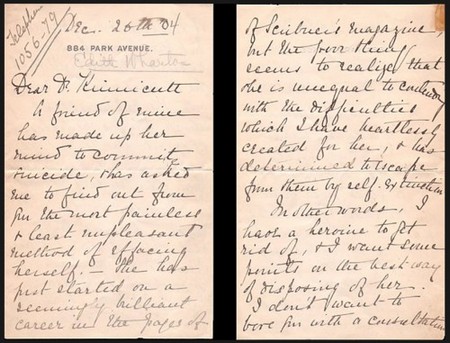
Edith Wharton’s writing
Other works by Edith Wharton
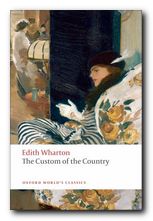 The Custom of the Country (1913) is Edith Wharton’s satiric anatomy of American society in the first decade of the twentieth century. It follows the career of Undine Spragg, recently arrived in New York from the midwest and determined to conquer high society. Glamorous, selfish, mercenary and manipulative, her principal assets are her striking beauty, her tenacity, and her father’s money. With her sights set on an advantageous marriage, Undine pursues her schemes in a world of shifting values, where triumph is swiftly followed by disillusion. This is a study of modern ambition and materialism written a hundred years before its time.
The Custom of the Country (1913) is Edith Wharton’s satiric anatomy of American society in the first decade of the twentieth century. It follows the career of Undine Spragg, recently arrived in New York from the midwest and determined to conquer high society. Glamorous, selfish, mercenary and manipulative, her principal assets are her striking beauty, her tenacity, and her father’s money. With her sights set on an advantageous marriage, Undine pursues her schemes in a world of shifting values, where triumph is swiftly followed by disillusion. This is a study of modern ambition and materialism written a hundred years before its time.
![]() Buy the book from Amazon UK
Buy the book from Amazon UK
![]() Buy the book from Amazon US
Buy the book from Amazon US
 The House of Mirth (1905) is the story of Lily Bart, who is beautiful, poor, and still unmarried at twenty-nine. In her search for a husband with money and position she betrays her own heart and sows the seeds of the tragedy that finally overwhelms her. The book is a disturbing analysis of the stifling limitations imposed upon women of Wharton’s generation. In telling the story of Lily Bart, who must marry to survive, Wharton recasts the age-old themes of family, marriage, and money in ways that transform the traditional novel of manners into an arresting modern document of cultural anthropology.
The House of Mirth (1905) is the story of Lily Bart, who is beautiful, poor, and still unmarried at twenty-nine. In her search for a husband with money and position she betrays her own heart and sows the seeds of the tragedy that finally overwhelms her. The book is a disturbing analysis of the stifling limitations imposed upon women of Wharton’s generation. In telling the story of Lily Bart, who must marry to survive, Wharton recasts the age-old themes of family, marriage, and money in ways that transform the traditional novel of manners into an arresting modern document of cultural anthropology.
![]() Buy the book from Amazon UK
Buy the book from Amazon UK
![]() Buy the book from Amazon US
Buy the book from Amazon US
Edith Wharton – web links
Edith Wharton at Mantex
Biographical notes, study guides to the major novels, tutorials on the shorter fiction, bibliographies, critiques of the shorter fiction, and web links.
The Short Stories of Edith Wharton
This is an old-fashioned but excellently detailed site listing the publication details of all Edith Wharton’s eighty-six short stories – with links to digital versions available free on line.
Edith Wharton at Gutenberg
Free eTexts of the major novels and collections of stories in a variety of digital formats – also includes travel writing and interior design.
Edith Wharton at Wikipedia
Full details of novels, stories, and travel writing, adaptations for television and the cinema, plus web links to related sites.
The Edith Wharton Society
Old but comprehensive collection of free eTexts of the major novels, stories, and travel writing, linking archives at University of Virginia and Washington State University.
The Mount: Edith Wharton’s Home
Aggressively commercial site devoted to exploiting The Mount – the house and estate designed by Edith Wharton. Plan your wedding reception here.
Edith Wharton at Fantastic Fiction
A compilation which purports to be a complete bibliography, arranged as novels, collections, non-fiction, anthologies, short stories, letters, and commentaries – but is largely links to book-selling sites, which however contain some hidden gems.
Edith Wharton’s manuscripts
Archive of Wharton holdings at the Beinecke Rare Book and Manuscript Library
© Roy Johnson 2014
Edith Wharton – short stories
More on Edith Wharton
More on short stories

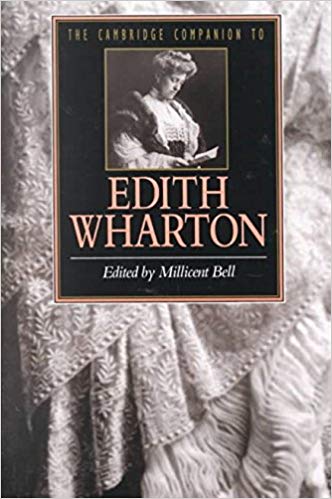
 Saul Bellow (1915—2005) was born of Russian-Jewish parents in Canada, but lived most of his life in Chicago, a city which features in many of his novels. His work features characters struggling to understand themselves, and searching for identity in an often irrational world. He has a wonderful ear for the rhythms of modern speech, and he captures city life particularly well. Linguistically, he manages to successfully combine an intellectual-philosophical vocabulary with the language of the street. And his narratives are often very funny. He was awarded the Nobel Prize in 1976.
Saul Bellow (1915—2005) was born of Russian-Jewish parents in Canada, but lived most of his life in Chicago, a city which features in many of his novels. His work features characters struggling to understand themselves, and searching for identity in an often irrational world. He has a wonderful ear for the rhythms of modern speech, and he captures city life particularly well. Linguistically, he manages to successfully combine an intellectual-philosophical vocabulary with the language of the street. And his narratives are often very funny. He was awarded the Nobel Prize in 1976. Dangling Man (1944) his first novel, is concerned with existential philosophy and the sense of identity which was much in vogue at the time of its publication. It’s an accomplished debut, thoughtful and serious, about a man who does not want to go into the army. This reflects the serious side of Bellow, who repeatedly inspects the human condition. But it doesn’t have much of the rib-tickling bravura of his later work. This is early Bellow flexing his wings. It is perhaps best appreciated after you have read some of his later works.
Dangling Man (1944) his first novel, is concerned with existential philosophy and the sense of identity which was much in vogue at the time of its publication. It’s an accomplished debut, thoughtful and serious, about a man who does not want to go into the army. This reflects the serious side of Bellow, who repeatedly inspects the human condition. But it doesn’t have much of the rib-tickling bravura of his later work. This is early Bellow flexing his wings. It is perhaps best appreciated after you have read some of his later works.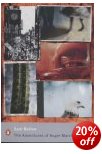 The Adventures of Augie March is an ambitious, rambling, almost picaresque novel. Its first half is a moving and seemingly authentic account of a young boy growing up in Chicago during the Depression – which is where Bellow himself was raised. The story then goes off in a free-wheeling account of a series of bizarre jobs and relationships, and he ends up in Mexico. Bellow’s purpose seems to be to question how much compromise is desirable and how much is necessary, and what make us think about which parts of ourselves we want to remain individual. The second half of the novel however is far less coherent and less credible than the first – but some critics think otherwise.
The Adventures of Augie March is an ambitious, rambling, almost picaresque novel. Its first half is a moving and seemingly authentic account of a young boy growing up in Chicago during the Depression – which is where Bellow himself was raised. The story then goes off in a free-wheeling account of a series of bizarre jobs and relationships, and he ends up in Mexico. Bellow’s purpose seems to be to question how much compromise is desirable and how much is necessary, and what make us think about which parts of ourselves we want to remain individual. The second half of the novel however is far less coherent and less credible than the first – but some critics think otherwise. Seize the Day (1956) is a novella in which you get a sense of Bellow finding his true voice. It’s a light, swift work with dark shadows that looks at the events of one day in the life of Tommy Wilhelm, a fading charmer. He confronts his sense of personal failure and a love-hate relationship with his father. This is his day of reckoning and he is scared. In his 40s, he still retains a boyish impetuousness that has brought him to the brink of havoc. In the course of this one climatic day, he reviews his past mistakes and spiritual malaise. This is a short work which is held together by the sort of concentrated sense of unity which is the hallmark of a good novella. It is now widely regarded as the first of Bellow’s great works.
Seize the Day (1956) is a novella in which you get a sense of Bellow finding his true voice. It’s a light, swift work with dark shadows that looks at the events of one day in the life of Tommy Wilhelm, a fading charmer. He confronts his sense of personal failure and a love-hate relationship with his father. This is his day of reckoning and he is scared. In his 40s, he still retains a boyish impetuousness that has brought him to the brink of havoc. In the course of this one climatic day, he reviews his past mistakes and spiritual malaise. This is a short work which is held together by the sort of concentrated sense of unity which is the hallmark of a good novella. It is now widely regarded as the first of Bellow’s great works.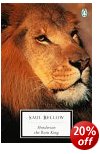 Henderson the Rain King (1959) was his first major success. It is a comic character study of American millionaire Gene Henderson, a larger-than-life 55-year-old who has accumulated money, position, and a large family, yet nonetheless feels unfulfilled. The story plots his frustrations with modern life, and his quest for revelation and spiritual enlightenment in Africa, where he fights with a lion, is hailed as a rainmaker, and becomes heir to a kingdom. He meets two tribes, one of which he virtually destroys in an attempt to purify their main water supply of a plague of frogs which goes disastrously wrong. Much of the novel’s humour derives from such antics from Henderson, a character-exaggeration clearly based on Ernest Hemingway (who was a highly regarded writer and public figure at the time).
Henderson the Rain King (1959) was his first major success. It is a comic character study of American millionaire Gene Henderson, a larger-than-life 55-year-old who has accumulated money, position, and a large family, yet nonetheless feels unfulfilled. The story plots his frustrations with modern life, and his quest for revelation and spiritual enlightenment in Africa, where he fights with a lion, is hailed as a rainmaker, and becomes heir to a kingdom. He meets two tribes, one of which he virtually destroys in an attempt to purify their main water supply of a plague of frogs which goes disastrously wrong. Much of the novel’s humour derives from such antics from Henderson, a character-exaggeration clearly based on Ernest Hemingway (who was a highly regarded writer and public figure at the time). Herzog (1964) became highly regarded and a classic almost as soon as it was published. It centres intensely on the life of Moses Herzog, a Jewish intellectual who is driven close to the verge of breakdown by the adultery of his second wife with his close friend. He writes letters to famous people, both living and dead – Spinoza, Nietzsche, Winston Churchill, and the President of the USA – giving them a piece of his mind and asking their advice about how to live. The novel begins with a statement which sets the tone for everything that follows: “If I am going out of my mind, it’s all right with me, thought Moses Herzog”.
Herzog (1964) became highly regarded and a classic almost as soon as it was published. It centres intensely on the life of Moses Herzog, a Jewish intellectual who is driven close to the verge of breakdown by the adultery of his second wife with his close friend. He writes letters to famous people, both living and dead – Spinoza, Nietzsche, Winston Churchill, and the President of the USA – giving them a piece of his mind and asking their advice about how to live. The novel begins with a statement which sets the tone for everything that follows: “If I am going out of my mind, it’s all right with me, thought Moses Herzog”. Humboldt’s Gift (1974) traces the life and memories of writer Charlie Citrine as he reflects on the influence of his boyhood friend and mentor, Humboldt. This character is based loosely upon Delmore Schwartz, the Jewish poet and short story writer whose early promise was never fulfilled. He descended into alcoholism and poverty, and died in a cheap hotel room, creating the modern version of the myth of the ‘doomed poet’. The novel deals with the ‘gift’ for aesthetic appreciation he passes on to his close friend Charlie, the narrator of the novel.
Humboldt’s Gift (1974) traces the life and memories of writer Charlie Citrine as he reflects on the influence of his boyhood friend and mentor, Humboldt. This character is based loosely upon Delmore Schwartz, the Jewish poet and short story writer whose early promise was never fulfilled. He descended into alcoholism and poverty, and died in a cheap hotel room, creating the modern version of the myth of the ‘doomed poet’. The novel deals with the ‘gift’ for aesthetic appreciation he passes on to his close friend Charlie, the narrator of the novel. Ravelstein (2000) is something of a double portrait. Abe Ravelstein, a mega-successful Jewish academic realises that he might be dying. He invites his friend Chick to write an biographical study of him. What we get is a not-so-thinly disguised portrait of the critic Allan Bloom written by a character who has had all the brushes with life which Bellow experienced in his own: near-death illness, late-life divorce, and happiness with a new wife. Since his death, it has become a lot clearer just how much of his own life Bellow put into his fiction.
Ravelstein (2000) is something of a double portrait. Abe Ravelstein, a mega-successful Jewish academic realises that he might be dying. He invites his friend Chick to write an biographical study of him. What we get is a not-so-thinly disguised portrait of the critic Allan Bloom written by a character who has had all the brushes with life which Bellow experienced in his own: near-death illness, late-life divorce, and happiness with a new wife. Since his death, it has become a lot clearer just how much of his own life Bellow put into his fiction.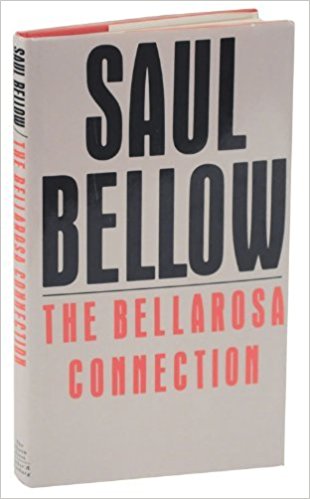
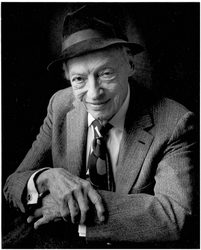
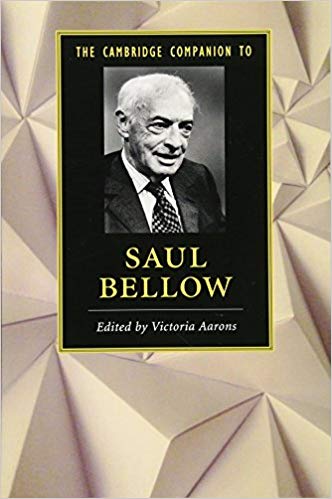
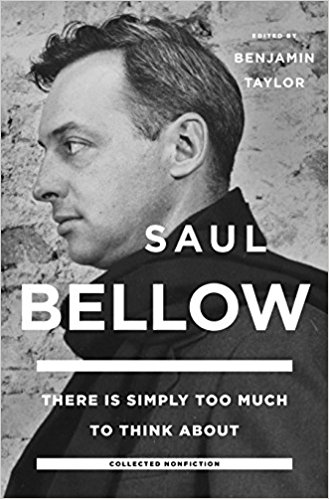
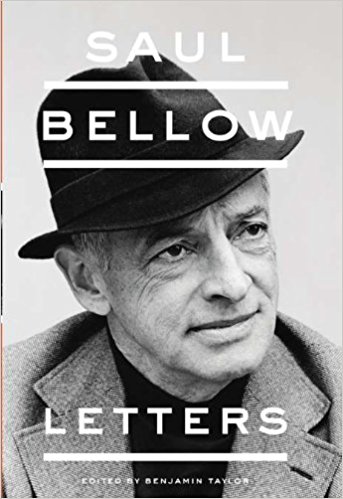
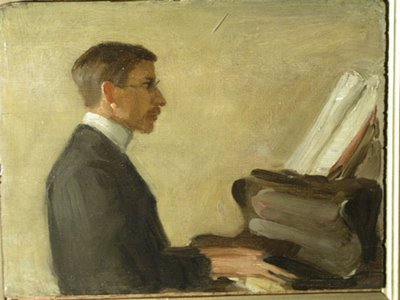
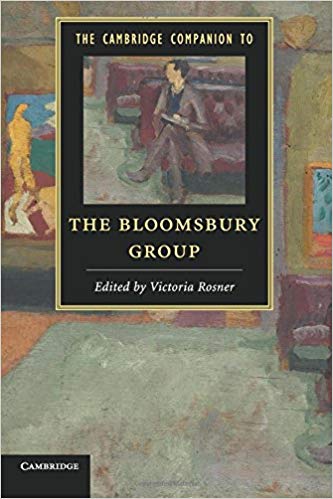

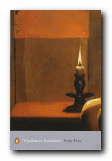 Pale Fire
Pale Fire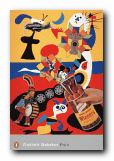 Pnin
Pnin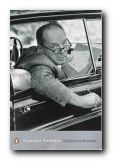 Collected Stories
Collected Stories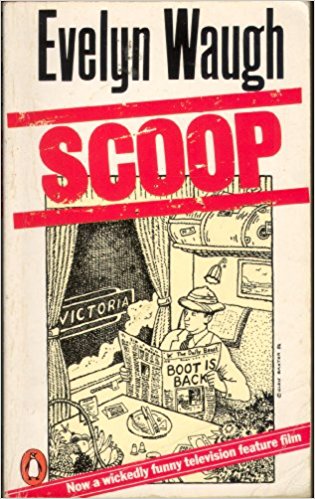






 The Ambassadors
The Ambassadors Washington Square
Washington Square The Aspern Papers
The Aspern Papers